Page 1 of 2
 In this tutorial I will show you how to create your own custom poker
card from scratch by using the wide variety of shapes that come with
Photoshop. I will also show you techniques on how to manipulate fire by
using simple methods.
In this tutorial I will show you how to create your own custom poker
card from scratch by using the wide variety of shapes that come with
Photoshop. I will also show you techniques on how to manipulate fire by
using simple methods.Create an Explosive Flaming Poker Card Photoshop Tutorial
Resources
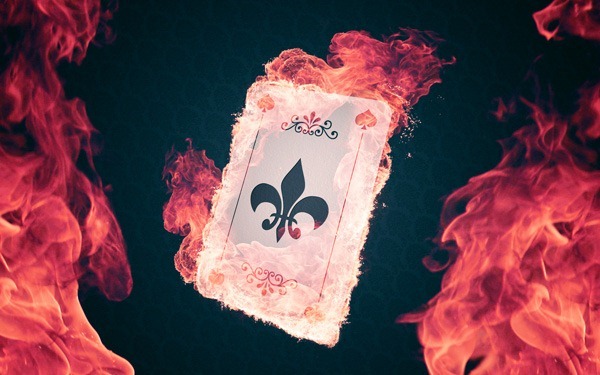
Step 1
Open up Photoshop and create a new document of 1680x1050 and click OK. As a start, we will need to fill the background with a grey colour #606060 so that all details of the flames will be visible once we are going to edit them.
Step 2
Create a new layer and name it Poker_card_base. We are going to create the poker card base by using the Rounded Rectangle Tool (U). We need a Shape Layer as it needs to be fully editable when we are going to edit the card shape itself. Set the Radius, located at the top menu, at 40px and drag the regular card shape.
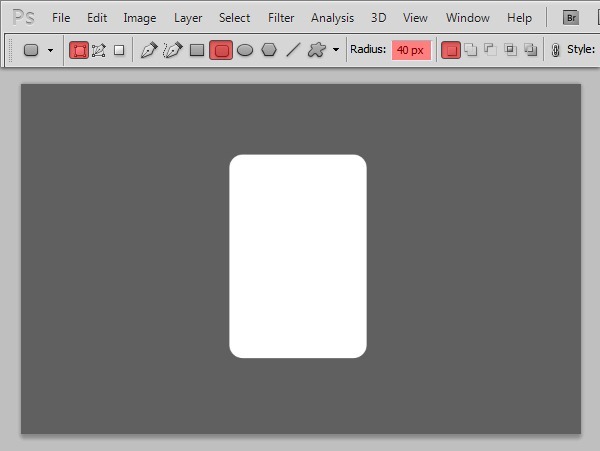
Step 3
Time for some creative freedom! You are going to create your own poker card with custom Shapes. With the Custom Shape Tool (U)selected,
you will notice that there is a small arrow located to the right of the
default Shape. Click on that and it will open the Custom Shapes Picker menu, try to find the spades shape.

You will automatically create a new Shape Layer when you drag the tool from the upper left corner. Make the spades symbol as large as you want but use a dark grey colour (#3b3b3b).
I want the symbol to show on each corner so we will need to duplicate this Shape by selecting it with the Path Selection tool (A)and pressCtrl+C and Ctrl+V
and drag it to the right corner. Select and copy the two spade shapes
again en drag them towards the bottom of the card and flip them by
pressing Ctrl+T and rotate these layers 180 degrees. You should have this result at this point of the tutorial.
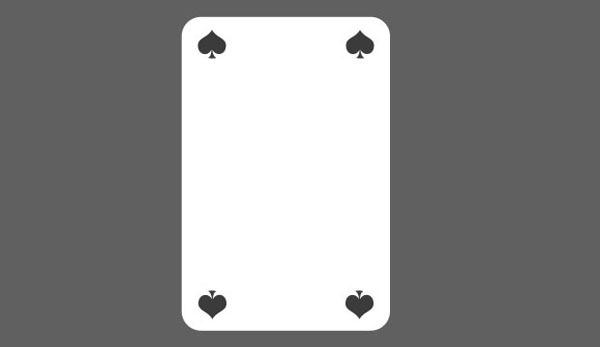
Step 4
Download this Paper Texture by Suzanne Clute and open it up in Photoshop and drag it into our working canvas. Place the texture below the Spades_symbols layer. Press Ctrl+T and make the texture smaller so that it fits the card, make sure you overlap the texture by a few pixels.
Note: I have lowered the opacity of the texture on the left for better viewing. In the Layer Menu, right-click on the texture layer and selectCreate Clipping Mask.
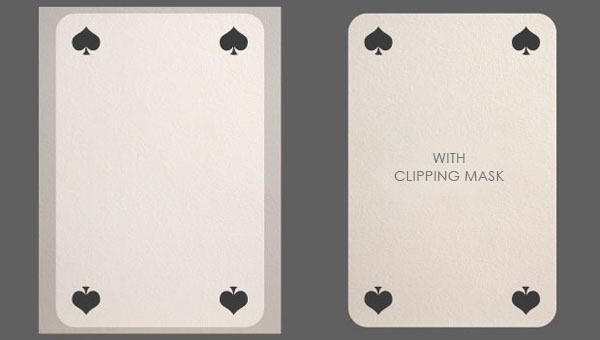
As
you can see the texture will be wrapped around the poker card base. The
texture has a soft pink tone which I want to get rid of by using a Hue/Saturation Adjustment Layer which you can create by clicking on the Create New Fill/Adjustments Layer icon located on the bottom of the Layer Menu. Set the Saturation to -45 to saturate the color a little bit.
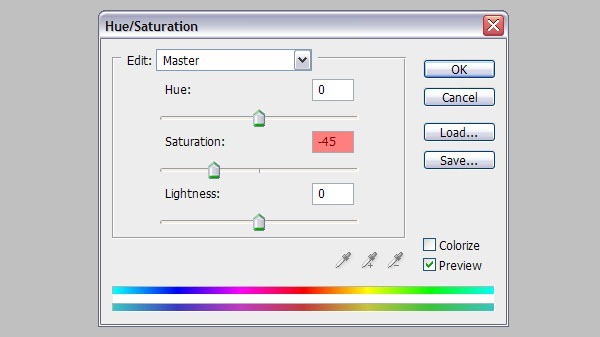
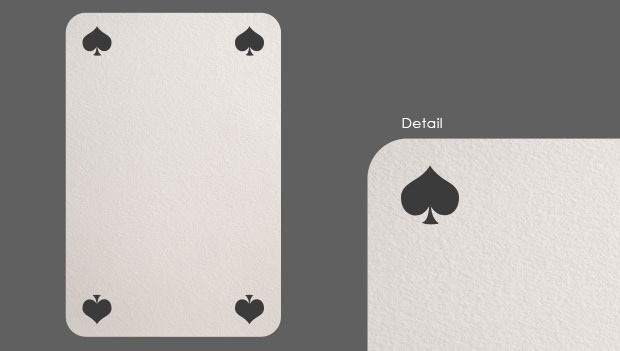
The card looks better but could still use some improvements. Go to Filter>Lens Correction or press Shift+Ctrl+R to create some vignetting. Click on the Custom tab on located at the top right and go to the Vignette section and set the Amount to -70 and the Midpoint to 0.

Step 5
Photoshop
comes with a set of custom shapes we can use for this tutorial. Find
the Fleur-de-Lis shape (shown below), create a new Shape Layer and with the dark grey colour #3b3b3b
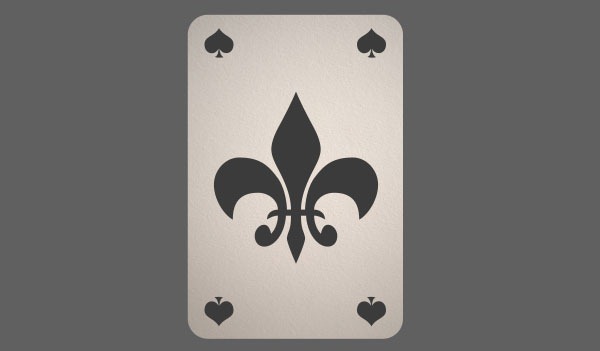
Step 6
You
can go as crazy as you want with your own custom poker card with the
wide variety of shapes. At this point of the tutorial I have added a few
ornaments to break away from the generic poker card image but still
keep it simple. As you may have noticed, I have also reduced the size of
the Fleur-de-Lis.
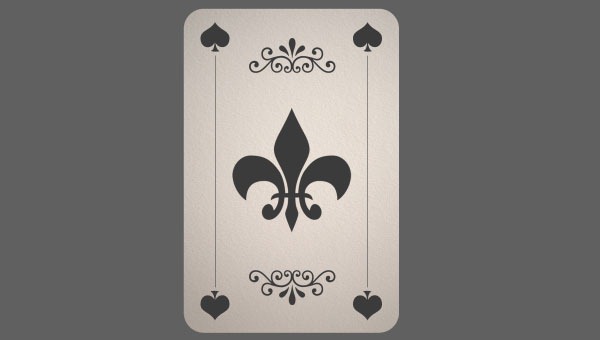
Step 7
There is a huge collection of free floral patterns on the web which we are going to use for the background. Download this Floral Pattern byJan Hadenfeldt
and open the Photoshop file. Remove the Layout folder created by the
author and rasterize the Smart layer so that it is easier to edit.
Select
the pattern layer and drag it into our poker card composition beneath
the poker card layers. We have to create several duplicates so that the
entire background is filled with the pattern (in total I have created
about 23 copies). Merge all the copied pattern layers.
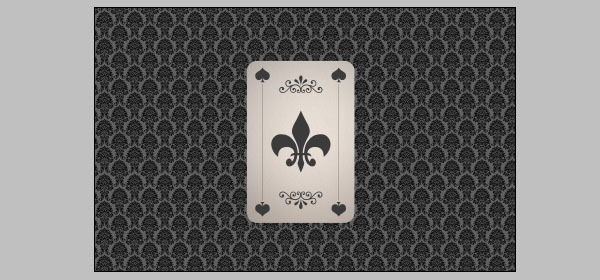
Rotate the pattern layer about 45 degrees in any way you would like and lower the Opacity to 15%.
Step 8
Fill the grey background with a darker grey (#454545) and apply the vignetting trick again by going to Filter>Lens Correction orShift+Ctrl+R but only this time, set the Amount to -100 and the Midpoint to 0. This will darken the the edges but gives a nice spotlight for our card.
Step 9
We
are going to change the perspective of the card so that it will give
the impression that the card is 3D, not quite like Avatar but we can at
least try. Select all of the layers that are connected to the card such
as the shapes and texture. Press Ctrl+T and right-click on the selection, this will open up a small menu with various options, choose Perspective.
Drag the lower right Anchor Point
towards the bottom to change the perspective into something more 3D and
something visually exciting. Just try to keep it realistic.
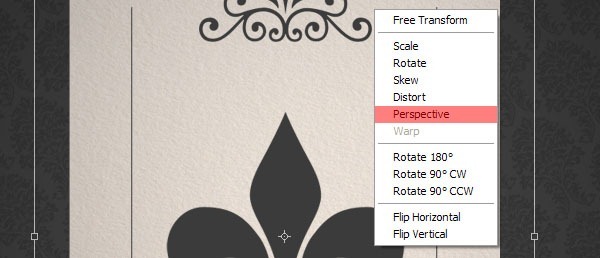
Once you are done finding a perspective you like, hit Enter. Please note that I also rotated the card and reduced the size just a little bit.
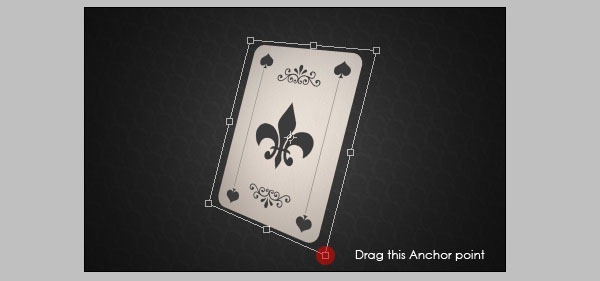
Step 10
Download and open the Fire image
in Photoshop but don't drag it into our composition just yet. In the
photograph there are three seperate flames which we will need to cut out
so that they all have their own layer. Simply use the Polygonal Lasso tool (L), create a selection around a flame and you can cut the flame through Layer via Cut. Do this with all three flames.
Step 11
Drag the middle flame into our composition and drag it on top of all the layers. Set the Layer Mode to Screen
so that the black background will dissappear, this is a nice trick as
you can do this with most natural elements (fire, water, earth). As you
can see, the fire image layer is too big for the card so simply resize
it by pressing Ctrl+T, the image will be selected and ready for resizing. Drag one of the Anchor Pointsto
do so. Notice how every flame has a curve section that goes into an
almost straight line, this is perfect because we are going to align it
with the sharp edges of the poker card.
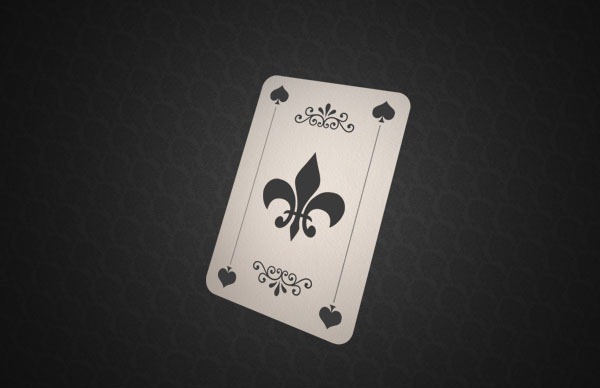

ليست هناك تعليقات:
إرسال تعليق